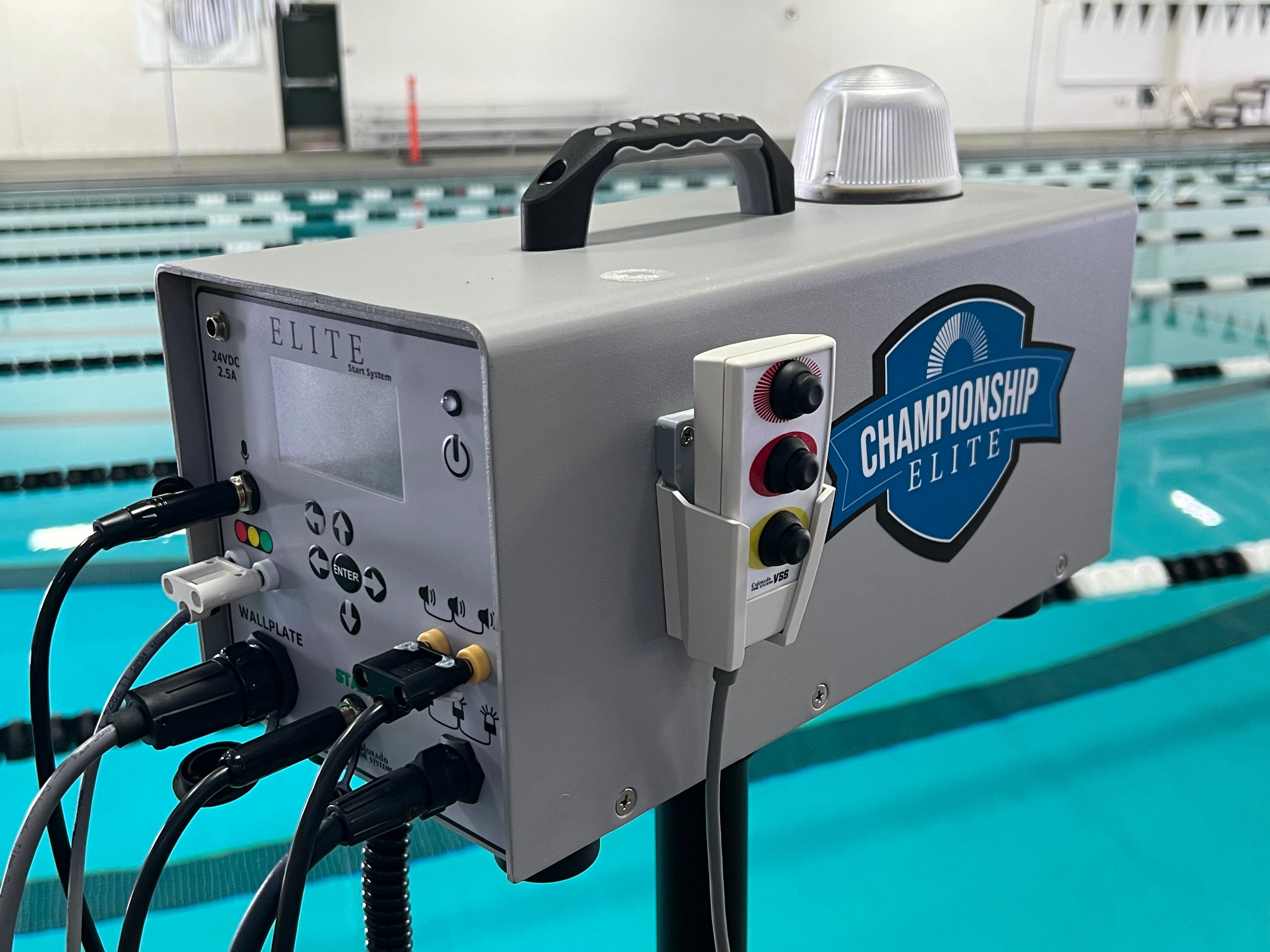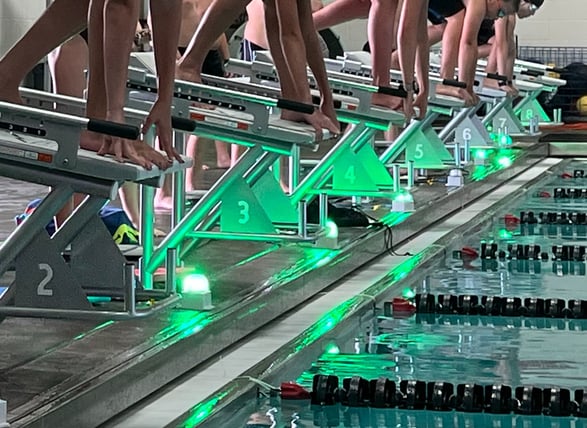
Colorado Time Systems Brings New Level of Inclusivity to Competitive Swimming
As seen in Athletic Business
In the world of competitive sports, every second counts. Athletes train relentlessly to shave off even the tiniest fraction of a second from their race times. However, for athletes who are deaf or hard of hearing, a disadvantage has always persisted — the reliance on hand signals during the start sequence.
Recognizing this challenge, the Engineering Team at Colorado Time Systems went above and beyond to develop an innovative solution. Introducing the Championship Elite Start System: a gamechanger in the world of sporting events.
This groundbreaking start system offers facilities the option to incorporate External Visual Indicators (EVI) and a Visual Start Sequence (VSS). How does it work? Well, it's as simple as it is ingenious. The bright multicolor EVIs are strategically placed at the starting platform, clearly signaling each segment of the start sequence. Using EVIs at a race means athletes who are deaf or hard of hearing no longer have to rely solely on hand signals — they can keep their focus on their race-ready posture, trusting that the EVIs will guide them through each step of the starting process.
For years, athletes with differing hearing abilities have faced a significant disadvantage when it comes to start-signaling in the competitive swimming arena. In a sport where every fraction of a second counts, it is crucial that all athletes have an equal opportunity to begin the race without limitations.
Traditionally, an official would use hand signals to provide non-audio-based start signaling for athletes. However, this method has proven to be less than ideal. To catch the signal, the athlete must divert their attention from their race-ready posture and look toward the official. This interruption causes a delay in their start, giving them a disadvantage that can cost precious hundredths of a second. In the world of competitive swimming, where races are often won or lost by mere milliseconds, a delay could ultimately determine the outcome of the race.
The integration of EVIs into the Championship Elite Start System levels the playing field to ensure that every athlete has an equal opportunity to perform at their best. The Visual Start Sequence removes the need for officials to perform hand signaling. With the simple push of three buttons, we can call athletes to the block, take their marks, and go.

“The lights and colors look great," said Mark Cronk of USA Deaf Swimming. "The three-button light control is simple and user-friendly. The stand-up sequence is perfect."
Training mode is one of the most valuable features of the Championship Elite Start System, offering swimmers an unrivaled opportunity to enhance their skills and reflexes with electronic starting.
Using the training mode, swimmers have the chance to fine-tune their reflexes, honing their ability to react swiftly to the starting signal. Once the training mode is activated through the menu selection, the starter will initiate a countdown, accompanied by a recorded, “Take your marks” message. Soon after, a start tone and strobe flash is triggered. With each practice session, the athlete's response time decreases, paving the way for faster, more efficient starts.
"The light is so bright, it's awesome," said Ethan Hasbury, head swim coach at Loveland Swim Club Jr. in Colorado. "The training mode is super useful; it keeps the athletes' attention and keeps them moving."
The Championship Elite Start System by Colorado Time Systems represents a significant leap forward in promoting inclusivity in competitive swimming. By incorporating External Visual Indicators and a Visual Start Sequence, the system not only levels the playing field for athletes who are deaf or hard-of-hearing, but it also enhances the overall competitive environment. As athletes refine their reactions with the training mode, they are better prepared for races, ensuring that every swimmer has an equal shot at success, regardless of their hearing abilities. This innovation is more than just a technological advancement; it's a testament to the spirit of inclusivity in sports, opening doors for athletes from all walks of life to compete and excel on an equal footing. As we embrace these advancements, we step closer to a future where the love for sport transcends all barriers, fostering a more diverse and inclusive competitive swimming community.

